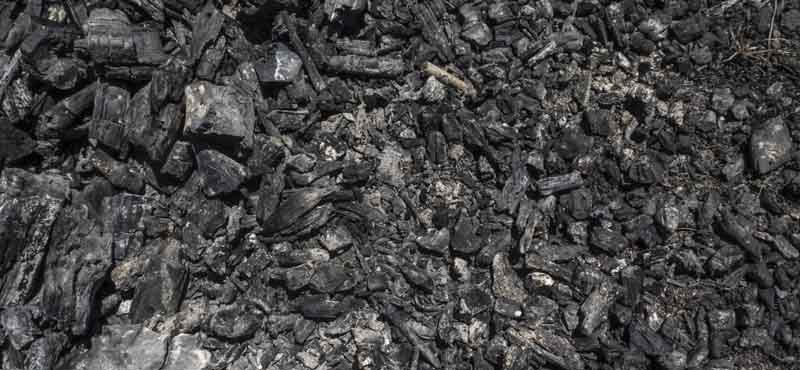Biochar Information
Biochar Information, The European Biochar Foundation defines biochar “as a charcoal-like substance that is pyrolyzed from sustainable obtained biomass under controlled conditions and used for any purpose that does not involve its rapid mineralization to CO2. Biochar is produced by biomass pyrolysis, whereby organic substances are broken down at temperatures ranging from 350°C to 1000 °C in a low-oxygen (<2%) thermal process. Torrefaction, hydrothermal carbonization, and coke production are further carbonisation processes whose end products cannot however be called biochar under the above definition.”
2009 Biochar Information
All Biochars are not created equal, and how to tell them apart, 2009 North American Biochar Conference, McLaughlin, Anderson, Shields and Reed.
Biochar a new threat to people, land and ecosystems ca. 2009, call for caution if considering large scale use of charcoal for climate mitigation.
Biochar, climate change and soil: A review to guide future research, February 2009, Sohi, S. et al., CSIRO Land and Water Science Report 05/09, Australia.
Biochar for Climate Change Mitigation: Fact or Fiction, Ernsting, A and Smolker, R., February 2009, Biofuelwatch, United Kingdom.
Biochar in Orchards, ca. 2009, Bound, S., Perennial Horticulture Centre, Tasmania Institute of Agriculture, Tasmania, Australia.
Preparation of Charcoal using Agricultural Wastes, 2009 Wondwossen Bogale, Mechanical Engineering Department, Jimma University, Ethiopia.
2010 Biochar Information
The Basics of Biochar: A Natural Soil Amendment, December 2010, Hunt, J. et al., College of Tropical Agriculture & Human Resources, Universtity of Hawai at Manoa.
Sustainable gasification-biochar systems? A case study of rice husk gasification in Cambodia, Part I: Context, chemical properties, environmental and healthy and safety issues, 2010 Elsevier, Shackley, Carter, Knowles, Middelink, Haefele, Sohi, Cross and Haszeldine.
2011 Biochar Information
Biochar: implications for agricultural productivity, December 2011, Jessica Sparkes and Peter Stoutjesdijk, Research by the Australian Bureau of Agricultural and Resource Economics and Sciences.
Biochar Stoves: an innovation studies perspective , April 2011, Carter. S and Shackley. S., UK Biochar Research Centre (UKBRC), School of GeoSciences, University of Edinburgh.
Gasification and Benefits of Biochar – ca 2011, 9 pages
2012
Biochar in horticulture: Prospects for the use of biochar in Australian horticulture, October 2012, Cox, J. et al., Department of Primary Industries, NSW, Australia.
Methods for Producing Biochar and Advanced Bio-fuels in Washington State Part 3: Literature Review, 2012 Department of Ecology, State of Washington.
Effect of Temperature on Pyrolysis Products of a Pine Sawdust in an Indirectly Fired Rotary Kiln, ca. 2012, Zhu, M. et. al., Centre for Energy, University of Western Australia.
The “Jolly Roger Ovens” family of Biochar-making devices, January 2012, McLaughlin, H. and Doug Clayton.
2013
A Comparison of Producer Gas, Biochar, and Activated Carbon from Two Distributed Scale Thermochemical Conversion Systems Used to Process Forest Biomass, 2013, Anderson, N. et al., Energies journal, 6, 164-183.
European Biochar Certificate: Guidelines for a Sustainable Production of Biochar, 2013, European Biochar Foundation (EBC), Arbaz, Switzerland. http://www.european-biochar.org
Large Scale Biochar Production from Crop Residue: A New Idea and Biogas-Energy Pyrolysis System, 2013, Wang et al., Bioresources 8(1), 8-11.
2014
Biochar and Energy From Trees Project, 2014, Alcoa Foundation Research Project, Greening Australia.
Biochar – What and Why?, March 2014, Miles, T. and Anderson, R., NW Biochar Working Group & Biochar Supreme, San Juan Islands Agricultural Summit.
Biocharculture: Biochar for Environment and Development, 1st Edition 2014, Sai Bhaskar N. Reddy, MetaMeta, The Netherlands.
Use of phytoremediation and biochar to remediate heavy metal polluted soils: a review, February 2014, Paz-Ferreiro, J. et al., Solid Earth, http://www.solid-earth.net.

